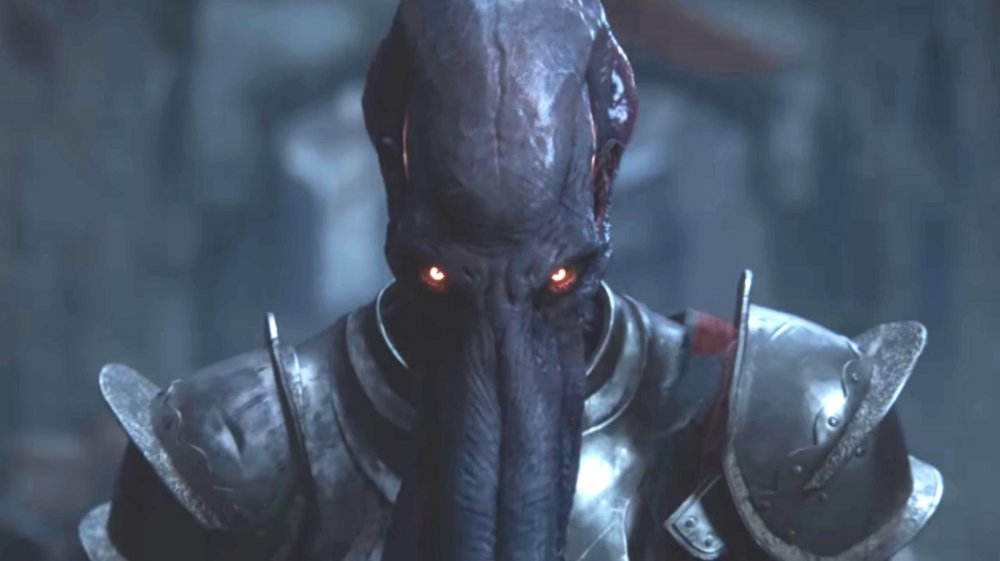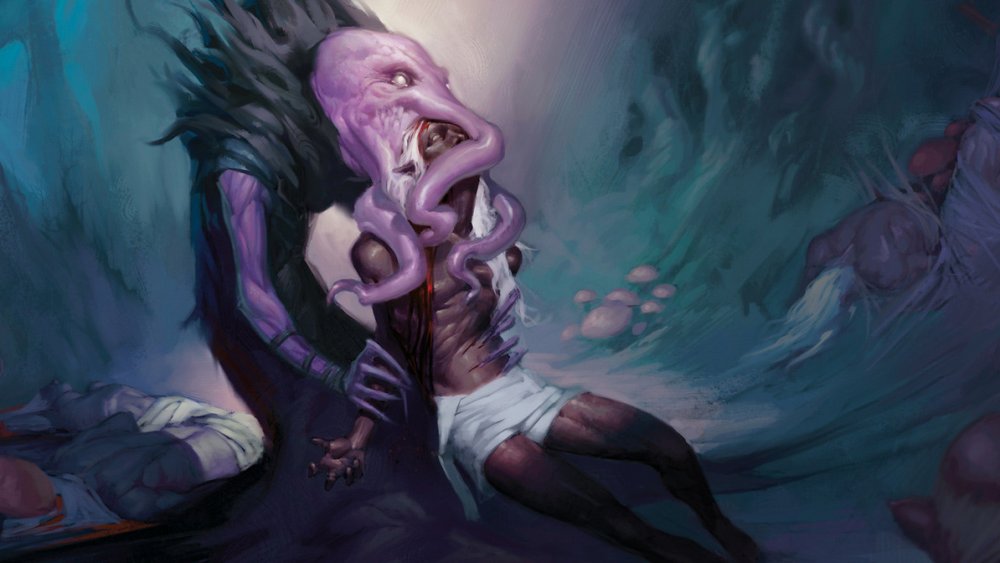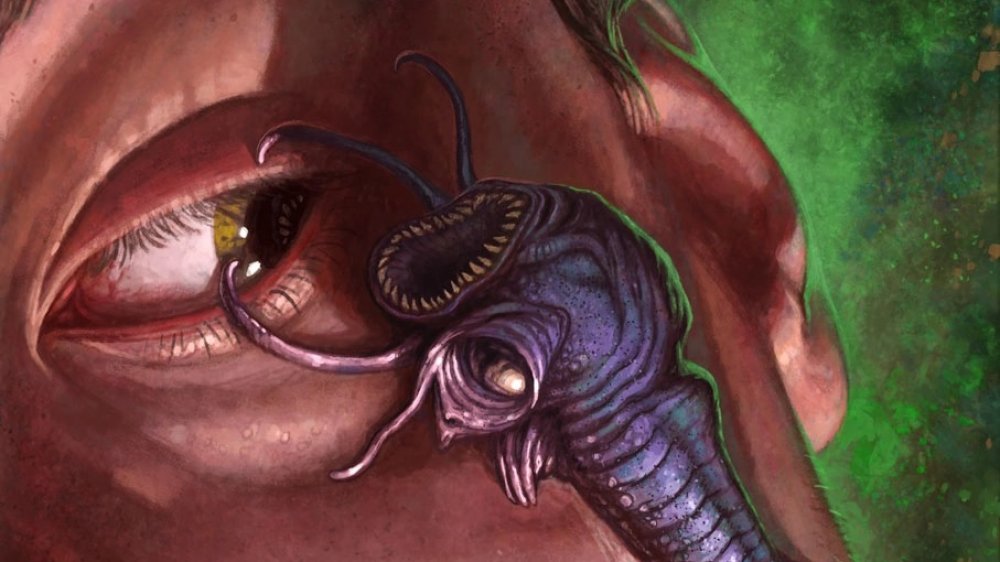Here's Why Dungeons & Dragons' Mind Flayers Will Matter In Baldur's Gate 3
Larian Studios has been turning heads recently. The studio's previous game, Divinity: Original Sin 2, is regarded as one of the best games of 2017 — and one of the best RPGs of all time. This game features memorable characters, an engrossing story, and open-ended spell and skill systems that let players invent their own solutions to daunting tasks. Essentially, the game is Dungeons & Dragons in everything but name, so imagine what the company could do with the D&D license proper. Wizards of the Coast was thinking the exact same thing when it gave Larian permission to produce Baldur's Gate 3.
Now, the most important feature of any D&D campaign is the villain. The previous Baldur's Gate games (developed by BioWare) revolve around the Lord of Murder Bhaal's machination to self-resurrect through one of his many offspring. But, Larian is taking a break from all that. Instead, the studio's entry into Baldur's Gate lore will focus on the squid-faced mind flayers.
If you are new to the world of D&D, you probably wonder what is so dangerous about mind flayers. Why not go with a more classic villain such as a lich or dragon, or even something like atropals — even though they are somewhat obscure? We'll gladly explain why mind flayers matter.
Mind flayers are the living, literal definition of mind over matter
Mind flayers are anything but normal creatures. They scream aberration, from their three-fingered hands to their face tentacles — but what truly makes them abhorrent is what goes on under the hood.
Technically, mind flayers are nothing but brain. Every nanometer of their body is highly-developed nervous tissue, which grants them powerful psionic abilities and a hive mind. In combat, mind flayers can unleash a psychic blast that can potentially deal serious damage and stun victims for one minute (one round of combat is six seconds). However, these powers come at the cost of positive emotions, which is why mind flayers are self-serving and sadistic. Also, they need to eat fresh brains to fuel their prodigious powers.
Since mind flayers need brains to survive, they live underground and raid the surface for a steady supply of food, and those they eat are the lucky ones. If you aren't consumed as literal brain food, you will end up a mindless thrall slave or worse. Your brain might sprout legs and roam around as an intellect devourer, be scooped out to form part of a brain golem, or be consumed into an oblex.
Since players can receive an intellect devourer pet in Baldur's Gate 3, odds are you will face other mind flayer creations — and thralls — throughout the game.
You either die as mind flayer chow or live long enough to become one
For all their mental prowess, mind flayers are anatomically impaired. To reproduce, they turn to the elder brains that maintain their hive mind. Each subterranean mind flayer community houses one elder brain inside a briny pool, and tiny tadpoles swim in it. Ninety-nine percent of the tadpoles are eaten by the elder brain, but those that survive are plucked from the pool and inserted into an unwilling host. Thus begins the terrifying process of ceremorphosis.
If you know Latin, you can probably guess what ceremorphosis is, but if you aren't a dead language necromancer, it is the process where the parasitic tadpole transforms its host into a mind flayer. The tadpole gorges on its victim's brain, swells to take up the braincase, and then latches onto the brain stem. The end result is the tadpole replacing the host's personality and memory and physically transforming the body into a new mind flayer.
Since the player's character and their companions are implanted with tadpoles at the beginning of Baldur's Gate 3, ceremorphosis will present an invisible ticking clock. The race is on to stop the process that threatens to turn you into your sworn enemy, which is no easy feat since ceremorphosis is widely regarded as irreversible — possibly save for a literal deal with a devil who may or may not be lying about his powers.



